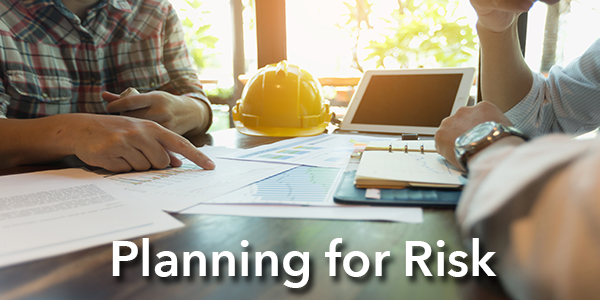No matter whether your construction project is large or small, risk exists in any construction undertaking. Each project is unique, with its own opportunities and challenges. Not everyone can successfully identify and manage construction project risks. Without proper planning, construction projects can run off the rails quickly. For this reason, it is essential to assess, control, and monitor construction risks once identified. With proper construction risk management, you can mitigate issues before they become a reality.
Types of Risks in Construction Risk Management
To address the question of why construction risk management important, we must appreciate the types of risks. These internal or external issues fall into categories such as environmental, financial, operational, and contractual. Common risks include:
- Safety hazards that lead to worker injuries and accidents
- Labor shortages
- Poor project management
- Unexpected increases in material costs
- Managing change orders
- Natural disasters
- Unknown site conditions
- Damage or theft to tools and equipment
- Issues with subcontractors and suppliers
How to Identify Construction Project Risks
The earlier you start the construction risk management, the better. Because every construction project is unique, each will have its own set of risks. Before any construction project gets underway, take time to identify these unique risks. If you fail to identify and manage a potential construction risk, you may suffer more severe consequences.
The project team and other stakeholders should identify risks. The initial goal is not to solve problems but to identify as many scenarios as possible that could negatively impact the project. Rely on the expertise and experience of your project team. Their knowledge is invaluable. Also, a review of past projects similar in size and scope to the current project will help better understand your current project’s risks.
The Construction Risk Management Process
Each risk needs quantification in terms of high, medium, or low-risk probability. Deal with high-risk impacts first. Similarly, work through each risk to prioritize the most urgent risks and allocate resources to mitigate them.
Mitigate Project Risks:
Break down each risk to ascertain how to meet them if they pose an obstacle. Because of this analysis, you know if you need additional workers or equipment, it will help to know this from the start.
Accept the Project Risk:
Low impact risks are the least worrying. However, you should take every construction risk seriously.
At FI•CON, our construction and fabrication solutions minimize risks. Our knowledgeable and dedicated team is on hand to learn more about your needs and answer all your questions. We work in a wide range of industries, including manufacturing, ports, mining, education, warehousing, health care, retail, and water treatment. To discuss your next project, contact us at ficonusa.com or (386) 792-3060.
